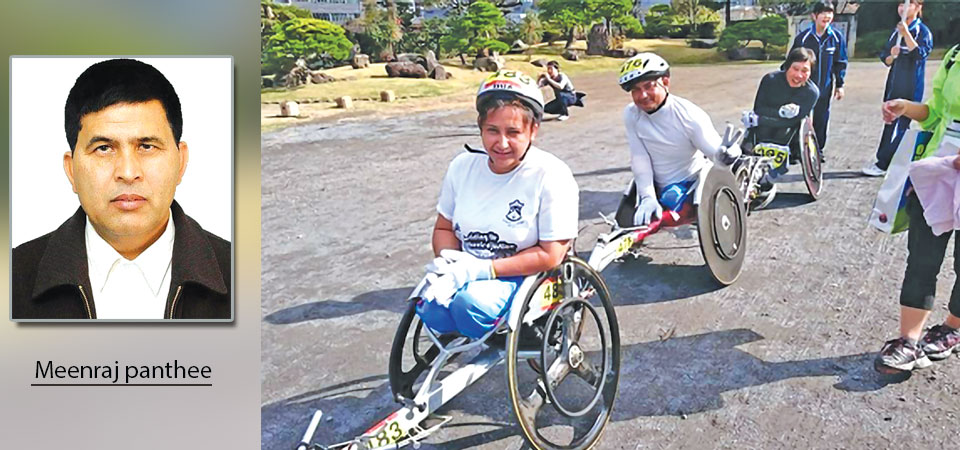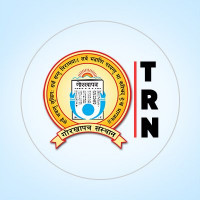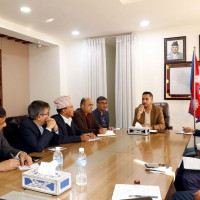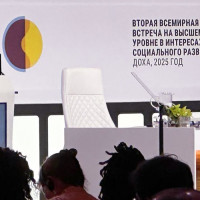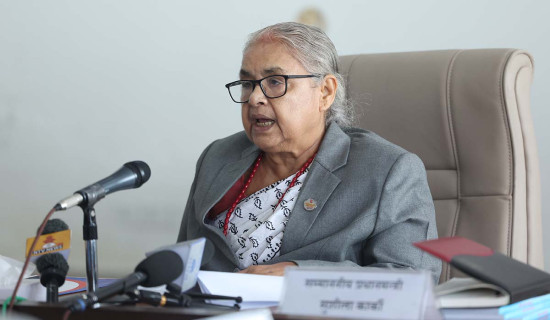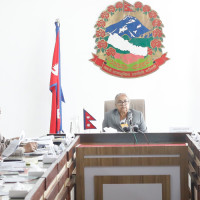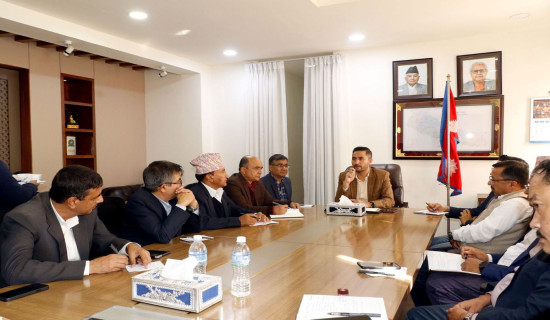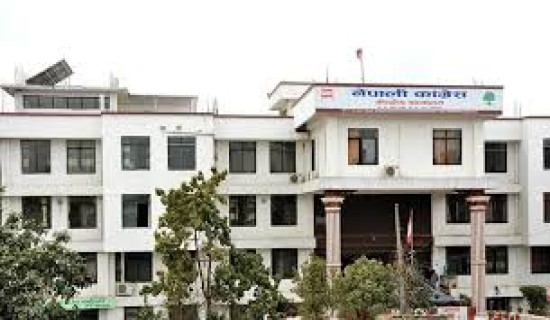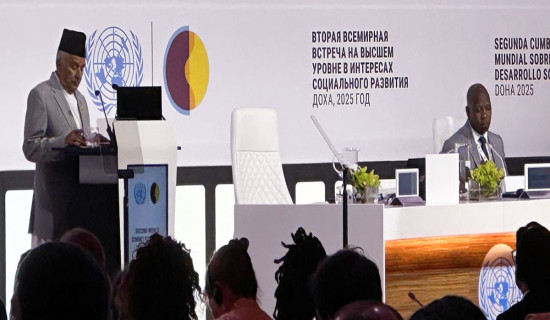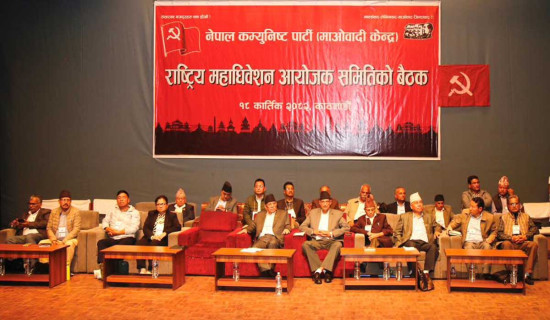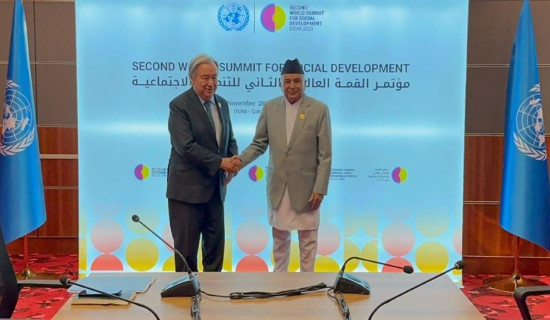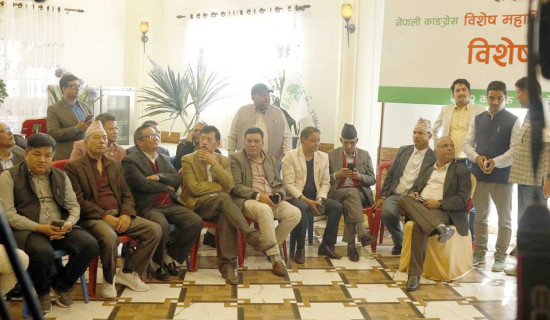- Wednesday, 5 November 2025
Para Sports Must Not Suffer
Meenraj Panthee
The Winter Para Olympics-2022 successfully concluded a few weeks ago in Beijing, reiterating loudly that sports remain a basic human right issue of every individual irrespective of their status in society.
President of the International Paralympics Committee (IPC) Andrew Parsons made a pertinent statement during the opening ceremony of the Beijing Winter Paralympics: "At the IPC, we aspire for a better and more inclusive world, free from discrimination, hate, ignorance and conflict." President Parsons made an immensely persuasive message before the world that articulated a whole-hearted aspiration and feeling of the athletes gathered there representing 46 different countries and disability communities around the world as a whole.
The practice of “One Bid, One City” for organising Olympics and Paralympics has taken place since 2001, in which every city that bids to host the Olympics will also bid to hold the related Paralympics, which vindicates the equal importance of both competitions. Since 2001 the Paralympics is held in the same city encompassing the same facilities, spirit and enthusiasm related to the corresponding Olympic Games.
Under IPC's disability classification categories for Paralympics, athletes compete in six different disability groups - amputee, cerebral palsy, visual impairment, deafness, spinal cord injuries, and intellectual disability.
Apart from this, there are some other categories, in which an athlete does not fit into one of the other categories, such as dwarfism. Within each group, athletes are further divided into classes based on the type and extent of their disabilities. Individual athletes may be reclassified at later competitions if their physical status changes. The size and diversity of the Paralympic games have increased significantly over the years due to an increased demographic range of the athletes. For example, the Paralympics in 1960 hosted 400 athletes from 23 countries participating in 8 sports, the summer Paralympics held in London 2012 had 4,200 athletes representing 164 countries participated in 20 sports, the Tokyo summer Paralympics had a total number of 22 sports with 550 events with badminton and taekwondo being added for the first time.
Para Sports In Nepal
The evolution of Nepal’s Para sports movement has witnessed many twists and turns. These forms of sports remained in the grip of certain powerful people who served their interests. The participation and representation of persons with disabilities from Nepal in various international tournaments commenced in the late 1970s under the initiation of one of the pioneer organisations, initially called Nepal Association for the Disabled and Blind.
Several disabled athletes such as Surya Kumari Gurung Mahattara, and Laxmi Subedi did not only take part in various international tournaments but also were able to win international medals for Nepal even before the restoration of multi-party democracy in Nepal in 1990. Surya Kumari Gurung, one of the medal winners, recalls their diligent preparation before competing. Nepal’s participation in the International Special Olympics events is a source of great pride. An exciting period was witnessed when the Nepal Paralympics Committee (NPC) officially opened its doors after fulfilling all requirements to be a legal entity back in 1995 under the initiation and leadership of persons with disabilities and their parents. The NPC possesses a strong commitment and dedication following the motto, "nothing about us without us", which develops the potential of persons with disabilities in sports activities in Nepal.
Gradually, the NPC was gaining popularity as it pledged a variety of tournaments to be conducted continuously making a level playing field at various levels in a systematic way for the first time despite facing financial and other resource constraints. Consequently, the NPC was thereby officially authorised and recognised by the country's sports governing body, Nepal Sports Council to develop and advance sporting activities for persons with disabilities. In the course of this evolution, other sports organisations, even disability-specific sport-related organisations came into being, and have jointly with the NPC been engaged in achieving their set objectives, i.e. Nepal Cricket Association of the Blind, Table Tennis Association for Persons with Physical Visual and Hearing Disabilities, Spinal Cord Injury Sports Association etc. Though NPC and its Member organisations were continuously engaged in organising sports events and preparing athletes to compete at national and international sports competitions, the above developments were not always able to continuously flourish. Parasports have often been embroiled in the ongoing conflict between NPC and NPSA since then as NPSA fails to respect the court verdict and law of the land along with forging consensus among concerned stakeholders until now. The problem is further exacerbated while the IPC is continuously supporting NPSA to represent Nepal, without being informed of the decision of the Supreme Court and without having the official support of the government.
Thus, on one hand, the government has authorised the NPC to play a lead role to deal with Para sports development and on the other hand, the NPSA has been representing athletes in international events causing a lot of confusion and demotivation amongst athletes with disabilities.
Experienced Sportspersons
The experienced sportspersons with disabilities argue that due to the conflict the process of training and sending qualified athletes from Nepal to take part in international games has suffered a setback. Instead of sending the competitive athletes to international events, those less deserving have gone to the Paralympics games for the past 18 years, depriving the qualified and deserving athletes of Nepal to take part in those events.
As a result, the participation of athletes from Nepal in the Paralympic competitions in the past has been quite limited, despite the availability of many Paralympic categories to compete. Nepal's participation in Tokyo's Paralympics last summer was limited to only one athlete while none of the Nepali para-athletes participated in Beijing Winter Paralympics. It shows the level of dysfunctional nature, lack of commitment and accountability on the part of the NSC and Paralympic committee. A significant amount of budget has been allocated and invested in the recent years for the advancement of para-sporting activities through the Ministry of Youth and Sport.
Setbacks
Other setbacks restricting the Para movement could be a dearth of technical and financial resources, centre based patchy programs, a low priority from the government and development partners, and split and fragmented attitudes among stakeholders rather than making an effort combined. Hence the government is required to introduce an appropriate policy and programme complying with Article 30 of the UN Convention on the Rights of Persons with Disabilities and domestic sports development-related legislation to address para-sporting activities at various levels, eg local, provincial, national and international. It is now imperative for the NSC, the Youth and Sports Ministry and the government to ensure the involvement of all pertinent stakeholders alongside disabled people's organisations making a concerted effort in the concerned sector. The government and the IPC are to be responsible to redefine the para-sports movement in compliance with the verdict of the Supreme Court of Nepal.
Indeed, sports have emerged as one of the best tools to empower and tap the unlimited potential of children and adults with disabilities. Sports help for their rehabilitation, both socially and functionally.
(Panthee is a freelance writer)

